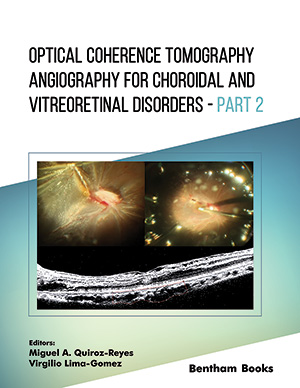Abstract
Purpose: Falls are a common public health problem in older adults regarding increased morbidity, mortality, and healthcare costs. Determining the factors associated with falls is of utmost importance for detecting at risk people. We present here a field study conducted to examine the prevalence of falls and the associated factors among community-dwelling older adults.
Methods: In this population-based cross-sectional study, we included adults aged > 60 years living in the Fatih District of the Istanbul Province between November 2014-May 2015, through a simple random sampling method. We noted age, sex, falls, fear of falling, number of diseases and medications, the presence of diabetes, hypertension, dyslipidemia, urinary and fecal incontinence, and chronic pain. Frailty was assessed with the FRAIL questionnaire. Functional capacity was evaluated by Katz’s 6-item ADL and Lawton Brody’s 8-item IADL scales. The European quality-5 dimension (EQ-5D) questionnaire was used for the quality of life assessment. The cognitive status screening was conducted with a Mini-cog test. Depressive mood was evaluated with the Geriatric Depression scale short form (GDS-SF). Malnutrition screening was conducted by the mini-nutritional assessment short form. Handgrip strength (HGS) was measured with a hand dynamometer. Body composition was assessed through a bioimpedance analysis. The 4-meter usual gait speed was recorded. The European Working Group on Sarcopenia in Older People2 (EWSGOP2) criteria was used for the sarcopenia definition. The Romberg and the postural instability tests were evaluated for balance and gait. Continuous variables were expressed as mean ± standard deviation or median and interquartile range for descriptive statistics, while categorical variables were expressed as the number and percentages. The differences between groups were determined through an independent sample t-test or Mann-Whitney U test when required, and Chi-square and Fisher’s exact tests were applied for categorical variables. A multivariate logistic regression analysis was used to determine the independent factors associated with falls among the factors identified as significant in univariate analyses.
Results: The prevalence of falls was 28.5% [mean age: 75.4 ± 7.3 (range: 61-101 years), 53.6% female], and a significant association was identified between falls and the number of diseases and medications, diabetes, chronic pain, frailty, ADL, IADL, and EQ-5D scores, dementia, GDS-SF score and level of ambulation in univariate analyses (p = 0.001, 0.030, 0.030, 0.010, 0.004, 0.040, 0.007, 0.003, 0.030 and 0.007, respectively). In the multivariate analysis, positive dementia (OR = 3.66, 95% CI = 1.40-9.53; p = 0.010) and frailty screenings (OR =1.47, 95% CI = 1.05-2.06; p = 0.020) were identified as associates of falls.
Conclusion: Falls were independently associated with positive dementia and frailty screening. These results will help develop specific and tailored precautions for at-risk groups to prevent the negative outcomes of falls.
Keywords: Community, dementia, falls, frailty, older adults, population-based, prevalence.
[PMID: 24133524]
[PMID: 21753098]
[PMID: 28461842]
[PMID: 29710167]
[http://dx.doi.org/10.1007/s11657-017-0319-2] [PMID: 28255680]
[http://dx.doi.org/10.1007/s40520-020-01747-1] [PMID: 33161531]
[http://dx.doi.org/10.1007/s40520-021-01807-0] [PMID: 33629277]
[http://dx.doi.org/10.1001/jama.297.1.77] [PMID: 17200478]
[PMID: 31438146]
[http://dx.doi.org/10.7326/0003-4819-147-8-200710160-00010] [PMID: 17938396]
[http://dx.doi.org/10.5435/JAAOSGlobal-D-17-00088] [PMID: 30211382]
[PMID: 22033000]
[http://dx.doi.org/10.1007/s12603-012-0084-2] [PMID: 22836700]
[http://dx.doi.org/10.1001/jama.1963.03060120024016] [PMID: 14044222]
[http://dx.doi.org/10.1016/j.archger.2015.08.019] [PMID: 26328478]
[http://dx.doi.org/10.1093/geront/9.3_Part_1.179] [PMID: 5349366]
[http://dx.doi.org/10.4235/agmr.19.0051] [PMID: 32743320]
[http://dx.doi.org/10.1111/j.1532-5415.1998.tb03800.x] [PMID: 9625181]
[http://dx.doi.org/10.3109/07853890109002087] [PMID: 11491192]
[http://dx.doi.org/10.5152/akd.2011.037] [PMID: 21342862]
[http://dx.doi.org/10.1002/1099-1166(200011)15:11<1021:AID-GPS234>3.0.CO;2-6] [PMID: 11113982]
[http://dx.doi.org/10.1590/S1980-57642009DN30200002] [PMID: 29213615]
[http://dx.doi.org/10.1002/(SICI)1099-1166(199910)14:10<858:AID-GPS35>3.0.CO;2-8] [PMID: 10521885]
[PMID: 30688929]
[http://dx.doi.org/10.1007/s12603-009-0214-7] [PMID: 19812868]
[http://dx.doi.org/10.1016/j.archger.2015.04.006] [PMID: 25944059]
[http://dx.doi.org/10.1093/ageing/afr051] [PMID: 21624928]
[http://dx.doi.org/10.1093/ageing/afz046] [PMID: 31081853]
[http://dx.doi.org/10.1519/JSC.0b013e31824f2040] [PMID: 22344056]
[http://dx.doi.org/10.4274/ejgg.galenos.2019.82]
[http://dx.doi.org/10.1016/j.clnu.2016.02.002] [PMID: 26922142]
[http://dx.doi.org/10.1053/S0003-9993(03)00348-4] [PMID: 14639568]
[http://dx.doi.org/10.21101/cejph.a4053] [PMID: 26615656]
[http://dx.doi.org/10.1371/journal.pone.0221875] [PMID: 31504057]
[http://dx.doi.org/10.1159/000236327] [PMID: 19738364]
[http://dx.doi.org/10.1590/1806-9282.65.11.1397] [PMID: 31800903]
[http://dx.doi.org/10.1016/j.archger.2005.12.005] [PMID: 16522334]
[http://dx.doi.org/10.1371/journal.pone.0005521] [PMID: 19436724]
[http://dx.doi.org/10.1111/jgs.15219] [PMID: 29318592]
[http://dx.doi.org/10.1111/jnu.12322] [PMID: 28755453]
[http://dx.doi.org/10.1007/s40520-015-0337-0] [PMID: 25762157]
[PMID: 32588029]
[http://dx.doi.org/10.1007/s12603-020-1543-9] [PMID: 33786561]
[http://dx.doi.org/10.1590/0034-7167-2017-0107] [PMID: 28793100]
[http://dx.doi.org/10.1007/s40520-021-01843-w] [PMID: 33864235]
[http://dx.doi.org/10.4158/EP171794.RA] [PMID: 28704101]
[http://dx.doi.org/10.1111/jgs.13153] [PMID: 25516023]
[http://dx.doi.org/10.1016/j.cger.2010.06.007] [PMID: 20934612]
[http://dx.doi.org/10.1093/ageing/afaa249] [PMID: 33349863]
[http://dx.doi.org/10.2174/1874609812666190215125104] [PMID: 30767759]
[http://dx.doi.org/10.1016/j.maturitas.2019.01.012] [PMID: 30797536]
[http://dx.doi.org/10.1519/JPT.0000000000000150] [PMID: 29939905]
[http://dx.doi.org/10.1016/j.berh.2017.10.004] [PMID: 29224694]
[http://dx.doi.org/10.1186/s12877-019-1399-1] [PMID: 31918674]
[http://dx.doi.org/10.1038/s41598-019-53522-6] [PMID: 31776354]
[http://dx.doi.org/10.1007/s40520-019-01309-0] [PMID: 31482296]
[http://dx.doi.org/10.1111/jocn.15098] [PMID: 31715045]
[http://dx.doi.org/10.1007/s40520-021-01844-9] [PMID: 34047929]
[http://dx.doi.org/10.1007/s12603-016-0741-y] [PMID: 27273355]
[http://dx.doi.org/10.1007/s00198-011-1545-x] [PMID: 21360219]































